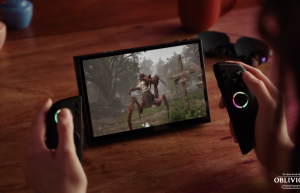Researchers found they could "listen" to bacteria using integrated circuit technology.
The team looked at signaling in bacterial colonies using the "basis" of modern computers and communication devices, a Columbia Engineering news release reported.
The chip is based on complementary metal-oxide-semiconductor (CMOS) technology and allows scientists to electrochemically image bacteria signals.
"This is an exciting new application for CMOS technology that will provide new insights into how biofilms form," Ken Shepard, professor of electrical engineering and biomedical engineering at Columbia Engineering said in the news release. "Disrupting biofilm formation has important implications in public health in reducing infection rates."
This is the first time integrated circuits have been used to "small molecules electrochemically in a multicellular structure," the news release reported. Optical microscopy is the go-to method for looking at biological systems but they cannot detect things such as "primary metabolism and signaling factors."
This new method uses direct transduction to electrons but excludes "photos as an intermediary." The team created an "active' glass slide, a slide that not only forms a solid-support for the bacterial colony but also 'listens' to the bacteria as they talk to each other," Shepard said.
Cells employ secreted molecules to regulate their physiological activities. The team "listened" to phenazines ("secreted metabolites that control gene expression"); the team found bacterial communities tend to produce a phenazine gradient believed to contribute to colony morphogenesis.
"This is a big step forward," Lars Dietrich, assistant professor of biological sciences at Columbia University said in the news release. "We describe using this chip to 'listen in' on conversations taking place in biofilms, but we are also proposing to use it to interrupt these conversations and thereby disrupt the biofilm. In addition to the pure science implications of these studies, a potential application of this would be to integrate such chips into medical devices that are common sites of biofilm formation, such as catheters, and then use the chips to limit bacterial colonization."
The team plans to work to create a larger chip that can image bigger bacterial colonies.
"This represents a new and exciting way in which solid-state electronics can be used to study biological systems," Shepard said. "This is one of the many emerging ways integrated circuit technology is having impact in biotechnology and the life sciences."
© 2026 HNGN, All rights reserved. Do not reproduce without permission.








